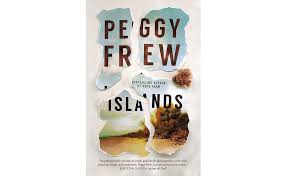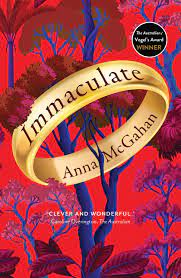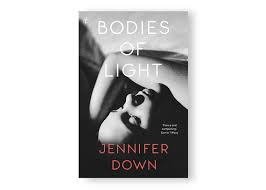Islands by Peggy Frew
Islands is the second book I’ve read by Australian author Peggy Frew, after reading Wildflowers this time last year.
I found the characters in Wildflowers to be cold and hard to like, possibly because they were difficult people who were going through very difficult times. The characters in Islands had different problems and were probably no happier than the characters from Wildflowers, however I liked them and their story better, possibly because of my familiarity with the Melbourne setting – even though all of the action in Islands took place ‘out the other side’ of Melbourne.***
The ‘island’ of the book’s title is Philip Island, south-east of Melbourne, where the main characters holidayed but it also alluded, perhaps slightly too obviously, to how separate they were from each other. The rest of the action took place in Belgrave, a suburb at the bottom of the Dandenong Ranges.
The story is about a family, Helen and John Worth and their daughters, Junie and Anna. Helen and John were mismatched from the start, as she was a free-spirit and he was conservative. When Helen fell in love with someone else and left John for her new bloke, the family disintegrated.
Junie was a teenager and had been living with her father in the 1980s when Anna, who had been living with their mother and her latest new bloke (there were many), went missing at the age of fifteen. The remainder of the story showed June, Helen and John coping with Anna’s disappearance, and their fractured relationships over the next few decades. The effects on all of them were terrible, however June’s relationship with her mother was the most difficult since she blamed Helen for putting herself, her sexuality and her relationships above what she and Anna needed from her, Anna having been particularly troubled.
The story went back and forwards in time, used different tenses from chapter to chapter, on occasion used catalogue descriptions of June’s paintings, poetry, psychologist’s transcripts, and even Christmas Day menus to tell the story, using different points of view, although Junie seemed to be the main character.
I like Peggy Frew’s writing style, but probably won’t go back for more anytime soon, as I prefer more joy in my reading.
***People from my side of town are more likely to take a beach holiday along the Great Ocean Road while people from ‘the other side’ of Melbourne to mine would be more likely to take a beach holiday at Philip Island.
My purchase of Islands continues my New Year’s resolution for 2024 to buy a book by an Australian author during each month of this year (April). I purchased Islands at Ironbird Bookshop in Port Fairy (past the far end of the Great Ocean Road).
On a personal note, I’m taking a break from blogging and will be back in May.












Recent Comments